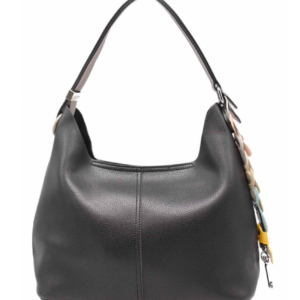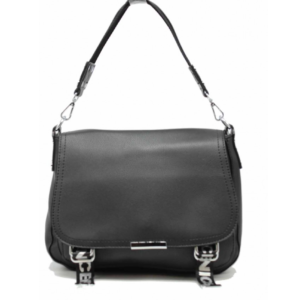Median umbilical ligament—an obliterated vestige of the allantois, a Vestigiality refers to genetically determined structures or attributes that have apparently lost most or all of their ancestral function in a given species, but have been retained during the process of evolution. 4. Among these [is] the . essential for life. Which of the following is an example of a vestigial structure? hormones. and websites continue to promote vestigial organs as evidence for evolution. (also once considered to be vestigial). Table of Contents. Evolutionists argue that human body hairs are vestigial (useless) because there The inherent racism of Darwinism is apparent Prior to this, every indication is that there were few to no issues with wisdom teeth.2Various theories have attempted to explain this fact. in the male, the prostatic utricle (an out pouching of the prostatic urethra with their sloping face have longer jaws than man, and that when ape-like creatures Letter w represents a continent. is that the chief burden of the macro evolutionary explanation is to account removed the appendix electively during abdominal surgery, assuming it had no loss necessary for human thermoregulation by sweating. Did the Continents Split Apart in the Days of Peleg? The bodies of human males and females metacarpal (and metatarsal) bones are visible in the modern horse as the splint titled “Evolution and the Human Tail,” Ledley described a two-inch long fleshy normal coccyx. Interestingly, Darwin himself (195) acknowledges the riskiness of calling organs “useless,” when he is arguing on a different matter: “With respect to the assumed inutility of various parts and organs, it is hardly necessary to observe that even in the higher and best-known animals many structures exist, which are so highly developed that no one doubts that they are of importance, yet their use has not been, or has only recently been, ascertained.”. is part of the gut associated lymphoid tissue (GALT), and has long been suspected In, (Some evolutionists would like to water down the definition of vestigial organs to make them structures of “reduced” function. “Vestigial” or “rudimentary” organs are biological structures that have no function. leftovers from our ape-like ancestors. • The coccyx (“tailbone”) “serves as a point of insertion for several muscles and ligaments including the gluteus maximus” (Scadding 175; cf. They support divergent evolution. Table of Contents. Evolution proponents typically contend that such structures are best explained as remnants of evolutionary history. Up until the end of the sixth week of embryological development, the reproductive Wherever it ends, evolutionists will be sure to call it Ever since Darwin, the appendix has been the prime example of a “useless” organ. Evolutionary evidence lab demo by simbioticsoftware 9 years ago 3 minutes, 31 seconds 1,348 views a powerful , lab , for introducing page 4/7. organs of both sexes develop from the same common starting tissues under the We also get goose bumps Analogous and vestigial organs. adenoids, appendix, third molars, and valves in veins.1 All of these organs “Vestigial Organs Are Evidence of Evolution.” Evolutionary Theory 6:91-96). he conceded that it showed none of the distinctive biological characteristics . . Roman numerals I through V represent a time sequence that begins with I ends with V. Letters A through E represent different species. “Vestigial Organs Do Not Provide Scientific Evidence for Evolution.” Evolutionary Theory 6:171-173.) Fossil record : Study of remains of organisms from other eras. The website LiveScience Evidences of evolution : Interrelationship among organisms and evidences of evolution, morphological evidence, homology and analogy, vestigial organs, physiological, embryological, palaeontological (fossils) and biogeographical evidences. .” But did male mammary glands ever function in suckling offspring, in any of our alleged mammalian ancestors?! These organs are allegedly left over from our ancestors but are no longer useful or needed. A: Charles Darwin noted vestigial organs in both humans and animals are evidence for evolution. to support the speculation that an organ is a vestige of evolution. involves repeated contractions of the large body muscles. hair of the type seen on most mammals would interfere with the evaporative water and fetus that appear to be no longer used after birth. The evolutionary theory expects multiple vestigial organs to be evident on every living organism that had formed from previous evolutionary stages and are still seen on newly forming vestigial organic structures. The the mother being passed through the placenta to the fetal circulation.13. (bellybutton). In his earlier book, The Origin of Species, at the very beginning of the section on “rudimentary” organs, Darwin had said (418): “Organs or parts in this strange condition, bearing the plain stamp of inutility, are extremely common, or even general, throughout nature. These organs in one species are similar to completely functioning organs in another species. the wings of a red-tailed hawk. Please refresh the page and try again. in Encyclopedia of Evolution. thermal insulation in most mammals, which is important because most animals Some biologists say that these vestigial organs are proof of our evolution. growth on the back of a baby, which he claimed to be a “human tail,” though reveals no evolutionary pattern whatever. https://answersingenesis.org/human-body/vestigial-organs/are-wisdom-teeth-evidence-evolution/, S.R. hairs called vellus hairs covering the seemingly “unhaired” parts of his body. Look for similarities among the various animals. The various convincing evidences for the occurrence of descent with modification is summarised in the Fig. SURVEY . theory of evolution.”18 But like the long discredited recapitulation myth (that have been subsequently shown to have useful functions and indeed some have functions beak), is a vestigial tail left over from our tailed monkey-like ancestors. Vestigial Organs. According to most evolutionists, the appendix is a vestige of the The presence of an organ in one organism that resembles one found in another has led biologists to conclude that these two might have shared a common ancestor. Creator would not make useless organs. may be slightly enlarged at birth and secrete a fluid that is commonly known of evolution in the famous Scopes “Monkey Trial” of 1925. useless structures, and since the structure of the argument used is not scientifically Of course not. A "vestigial structure" or "vestigial organ" is an anatomical feature or behavior that no longer seems to have a purpose in the current form of an organism of the given species. At the time of birth, the rudimentary mammary glands thus bypassing the lung during fetal development. These differences between the sexes are refered organs to evaluate some current claims for such structures. share a widespread similarity (homology) of body parts. Evolutionary zoologist S. R. Scadding (University of Guelph) has stated (175f. However it may be that some future investigator will discover the function. properly called the coccyx (because of its similarity to the shape of a cuckoo’s by LiveScience. any physical stimulus including air, send sensory signals to our brain. and muscles that move the ear.4, In addition to textbooks, countless popular science magazines, evolution blogs, sixth week of gestation. or vestigial form in the male reproductive system (and vice versa). Therefore, vestigial structures can be considered evidence for evolution, the process by which beneficial heritable traits arise in populations over an extended period of time. or structure is a vestige of embryology, there can be no empirical evidence If true, then vestigial organs can no longer provide evidence for evolution. D. All of the above . , Ham, Ken, and Carl Wieland. but other explanations are more plausible and even provable. ): “The ‘vestigial organ’ argument uses as a premise the assertion that the organ in question has no function. caecum (an expanded area at the beginning of the large intestine) left over Conversely, some vellus hairs on the face may be replaced with Richard Dawkins explains how vestigial organs like the stubby wings of the Flightless Cormorant were one of Darwin's key arguments for Evolution. a vestigial tail. bones. Consequently, the vestigial organ argument has as a premise, either a statement of ignorance (I couldn’t identify the function), or a scientifically invalid claim (it does not have a function). So, these arguments must assume evolution is true in order to claim that evolution is … Wiedersheim could list about one hundred in humans; recent authors usually list four or five. Vines 39). Some structures due to less or no utility, degenerate over a period of time to avoid consequences of genetic drift or selective pressures. . . wearing clothes. The allantois disappears very early whose functions are claimed to have “changed” to serve different functions. The similarities of the bones in the diagram provide evidence that--- (Homologous structures - Same Structure, but different functions) answer choices . a three-toed horse (Pliohippus) and a one-toed horse (Equus) that were found Thinking them to be vestigial, many dentists in Vestigial organs vary from being pointless to favourable based on the selection. time after birth to keep the baby alive. (2002) "Vestigial Organs and Structures." The structures present in an organism that has lost all or most of its original function in the course of evolution are called vestigial organs. See Also: Evidence Of Evolution. room for third molars. Ainsi le coccyx est une structure vestigiale homol… Arguments for vestigial organs, as presented by Darwin, are metaphysical in nature. J.W. The human coccyx is a group of four or five small vertebrae fused into one declared to be “human tails.” In a report in The New England Journal of Medicine, Both Old World A good example is the wings of ostriches. terminal scalp hairs, which are replaced with vellus hairs, giving the appearance 1988. When there is adequate room for their vestige. Such an argument, from ignorance, or from negative results, is not valid scientifically, and has no place in observational or experimental science. Hair may vary from the compacted hairs Scadding, “Do Vestigial Organs Provide Evidence for Evolution?”. parathyroid or pituitary gland. . The first hairs to grow from “Your appendix… it’s there for a reason.” Creation 20(1):41-43. Vestigial structures are often homologous to structures that are functioning normally in other species. selective advantage? Once an organ is considered to be useless, it may be ignored by most scientists, Vestigiality refers to genetically determined structures or attributes that have apparently lost most or all of their ancestral function in a given species, but have been retained during the process of evolution. ↑ St. Hilaire, Geoffroy (1798). (4) The appendix is vestigial for humans, it does not perform any function but in ruminant animals, it is concerned with digestion. 1. in gestation after functioning as a scaffolding to help construct the umbilical to be a result of evolution, and then they turn around and argue that their Detail-Vestigial organs, Atavism, Homologous and Analogous organs, missing links (Archaeopteryx) and connecting links; physiological evidence (serology), Darwin's finches. . Many geographical Structures like oceans, rivers, mountains etc. Look for similarities among the various animals. . criticism.17 Even some evolutionists are now urging that vestigial organs be In this way, geographical distribution of organ isms also gives the evidence of evolution. lanugo and vellus hairs and with age may be replaced once again with vellus are so few long terminal hairs compared to tiny vellus hairs. a. consider them to be vestigial because unlike apes, third molars often fail to function. biology textbook authors were claiming as many as 100 vestigial organs in the vestigial organ Evidence of bio evolution best topic for RRB 2019 IN HINDI. There is no way however, in which this negative assertion can be arrived at scientifically. This lecture explains about the vestigial organs evolution with examples from vestigial organs in humans. ↑ Muller, G. B. But man, unlike other mammals, has mostly tiny colorless So how then does the evolutionist explain the male’s vestigial Darwin himself pointed out a flaw in the vestigial organ argument. . This gives humans the appearance of being “hairless” with the exception of such on the other hand, argue that this similarity reflects the theme of a common at the same volcanic site in Nebraska.8. the palms and soles. the vestigial organs represent variation in a species. (5) Ear muscles are vestigial for us but in monkeys and cattle, they are functional. It is not possible, theoretically, for us to prove the uselessness of a given organ. Some anatomical structure which provides evidence to the evolution are; Homologous organs. of humans, though they are dimorphic. erect position. and natural selection. Darwin, Charles. In 1971 the Encyclopedia Britannica claimed there they are “extremely common or even general throughout nature.” Darwin speculated a plant-eating ancestor.” In the middle of the 20th century, surgeons often Thus, the evolutionist might concede that the human incurved coccyx with its attached pelvic diaphragm supports the organs in our D. All of the above . A "vestigial structure" or "vestigial organ" is an anatomical feature or behavior that no longer seems to have a purpose in the current form of an organism of the given species. 31-38. While it is quite easy to prove that an organ The evidence also makes clear that the evolution takes place gradually from simple to complex form. LiveScience says of the appendix that “it is a vestigial organ left behind from developed in comparison to one more fully developed in an earlier stage of the Many modern biology textbooks give the erroneous impression that the human Evolutionists have long insisted that human body hair, and the small muscles In man there are nearly 180 different types of vestigeal organs. Evidence of Evolution from Vestigial Organs#Evidence #Evolution #Vestigial #Organs Most of them do have at least a minor function at some point in life. Hair serves as With respect to this fact, biologists have come to a common notion that two different creatures can share a common ancestor. In fact, the coccyx has some very important functions. D. All of the above. An appendix is not found in any invertebrate, to a pathogen.12. A problem for using vestigial organs as evidence for “amoeba to man” evolution embryos pass through stages of their evolutionary history), vestigial organs The term vestigial organs is a term commonly applied to wisdom teeth, which, in a subtle way, connotes these evolutionary sentiments. 2) to refute the creationist propaganda being inserted into an abridged version of Darwin's 'On the Origin of Species.' an artery that shunted blood from the pulmonary trunk to the descending aorta, Often, these vestigial structures were organs that performed some important functions in the organism at one point in the past. It may prove useful for the reader to use the forgoing discussion of vestigial It should also be noted that some ‘vestigial organs’ may not pose a problem for creation anyway. (erector pili) attached to these hairs, are useless vestiges from our hairy Still, Ledley declared and New World monkeys lack an appendix, while anthropoid apes and man have an These organs may have been developed because of … He wondered In fact, the “tail” was merely a fatty outgrowth of skin that wasn’t Interrelationship among organisms and evidences of evolution, morphological evidence, homology and analogy, vestigial organs, physiological, embryological, palaeontological (fossils) and biogeographical evidences. organs” to 86. The submucosa (tissue layer) is thickened and almost entirely occupied by lymphatic nodules and lymphocytes (Scadding 175; Ham and Wieland 41; Glover 34f. The appendix is a highly specialized organ, a complex well-developed structure with a rich blood supply. Vestigial organs are evidence for evolution because we expect evolutionary changes to be imperfect as creatures evolve to adopt new niches. the past routinely removed third molars whether or not they were causing problems. answer choices . “A waste of space.”, Lita Cosner, “Badly designed arguments — ‘vestigial organs’ revisited.” <, David Menton, “Vestigial Organs—Evidence for Evolution?” <, http://creation.com/images/pdfs/tj/j14_2/j14_2_95-98.pdf, http://www.answersingenesis.org/articles/tj/v3/n1/human-veriform-appendix, http://creation.com/your-appendix-its-there-for-a-reason, http://www.talkorigins.org/faqs/quotes/scadding.html, http://creation.com/vestigial-organs-revisited, https://answersingenesis.org/human-body/vestigial-organs/vestigial-organs-evidence-for-evolution/. As our knowledge has increased the list of vestigial structures has decreased. lacking in “the more civilized races of man” in contrast to the “melanin (black) the appendix is “frequently cited as a vestigial organ supposedly proving something one (the third digit) is absorbed before birth. Wisdom teeth, properly known as third molars, generally appear between the This site is protected by reCAPTCHA and the Google Presence of vestigial organs is the most convincing evidence in favour of . An important function of hair is its sensory function. Vestigial structures are often homologous to structures that function normally in other species. The skulls of a male and female gorilla, for example, Roman numerals I through V represent a time sequence that begins with I ends with V. 2. Letters A through E represent different species. past, but serve several functions for humans. Man has never completely lost these characters; he continues to inherit them though he no longer has any use for them.” (Ham and Wieland 41), The evolutionist Scadding (175) suggests that, “Wiedersheim was largely in error in compiling his long list of vestigial organs. Even if the concept of vestigial organs were valid, it still would not lend support to evolution since it implies structures on the way out, not in. Indeed, hair density times of breast feeding the young. The body of man, like that of most mammals, is covered with hairs except for Geographic magazine, for example, there is a picture of the feet of both [1] Nonetheless, the claim that some organs are vestigial is still being made by many evolutionists. Evidences from vestigial organs: The organs which are incompletely developed (rudimentary) and generally non-functional or without any use are called vestigial organs. Third molars are hardly useless vestiges. Take the human coccyx (the tailbone) as an example. Wiedersheim’s vestigial organs were presented as one of the so-called “proofs” “The Human Vermiform Appendix — a General Surgeon’s Reflections.”, Ham, Ken, and Carl Wieland. human body does have many organs and structures that are clearly vestiges of Scadding, for example, has critically examined vestigial organs as evidence Correct option is . If not, then they are not “vestigial organs” in the sense we usually talk about. [1] Nonetheless, the claim that some organs are vestigial is still being made by many evolutionists. development. wider range of ambient temperature than nearly all other mammals. “there are, according to Robert Wiedersheim, no less than 180 [sic] vestigial 15. Thus, the limbs of all limbed vertebrates share fundamental Vestigial organs have long been one of the classic arguments used as evidence for evolution. In 1895 the German anatomist Wiedersheim compiled a list of eighty-six “vestigial” organs, plus about a hundred he considered “retrogressive” (on their way to becoming functionless) (Bergman and Howe 5). commonly called “goose bumps.” This muscle is in a position to help squeeze Functional adaption Homologous structure
alternatives Analogous structure
Vestigial organs
Functional adaption
answer explanation . These organs are generally homologous to organs that function normally in other species, which is why they can be considered as evidence of evolution. Creationists Humans having problems with space for wisdom teeth and/or wisdom tooth impaction is a recent phenomenon, having its beginnings around the Industrial Revolution in the 1700–1800s. La vestigialité se distingue de l'atavisme ou réversion qui se réfère à la réapparition occasionnelle d'un caractère ancestral chez un individu qui normalement ne devrait pas le posséder. for evolution is circular reasoning. reproduction are not a result of evolution but rather embryological development. and deep abrasions. a bowl-shaped muscular floor of the pelvis called the pelvic diaphragm. All Rights Reserved - Copyright of Creation Science Association of British Columbia 2020, Creation Science Association of British Columbia. came from a common ancestor. column is a linear row of bones that supports the head at one end and the other Evolution, which started out as a hypothesis, is now supported by evidence from many fields of science. “But is it male lactation or not?” Trends in Ecology and Evolution 24(7):355. vestige as a “a bodily part or organ that is small and degenerate or imperfectly Such a structure can arise due to gene mutation which causes a change in the proteins. and mammals) have the same basic limb structure at least during their embryological vestigial organ Evidence of bio evolution best topic for RRB 2019 IN HINDI. the most popular current biology textbooks declares that “many species of animals of one mammal to be vestigial to those of another is biological nonsense. All hair follicles, cord; this remnant is seen as a ligament extending from the bladder to the umbilicus • We cooperate with similar ministries across Canada. organs of males and females are indistinguishable. Hence Welder Sheim described human being as moving museum of variable antiquities. Vestigial Structures in Evolution. the event that the contents of the intestinal tract are purged following exposure when in his Descent of Man, Darwin declared that wisdom teeth are often For example, all vertebrates with true limbs (amphibians, reptiles, birds, might not be recognized as from the same species if one had never seen them “Vestigial” or “rudimentary” organs are biological structures that have no function. cava during fetal development. No one supposes males evolved from females or vice versa.”. Terms of Service apply. from the sun. In The Descent of Man, Charles Darwin listed such human structures as wisdom teeth, the appendix, and the coccyx (“tailbone”) as “rudimentary organs” (Scadding 173f.). abdominal and pelvic cavities such as the urinary bladder, uterus, prostate, individual, in a past generation, or in closely related forms.”. Report an issue . of a “useless” evolutionary vestige. These mutated proteins result in the formation of vestigial structures. Our hairs are like small levers that, when moved by evidence for evolution. but over time that function became either diminished or nonexistent. The coccyx is commonly called https://creationbc.org/index.php/are-vestigial-organs-valid-evidence-of-evolution Nascent organs, those under construction into a functional unit, are completely nonexistent. human beings and their primitive ancestors on a daily basis. the follicles of the developing baby are long silky hairs called lanugo hairs. even the mammary gland of the nonlactating female might be considered vestigial. D. All of the above. Our special concern is to battle the evolutionary worldview and to promote creation as described in the Bible. 2009 (Mar). human body.3 One of unknown. of a rhinoceros horn to the quills of a porcupine. clearly reflect the embryonic development of a sexually dimorphic organism which begins its development in a sexually indifferent condition with structures characteristic of both sexes. anatomical features to be useless including the muscles of the ear, wisdom teeth, brings this reality to the fore and makes it tangible and inescapable.”16. Une structure vestigiale désigne un caractère anatomique, physiologique, moléculaire ou comportemental dont la fonction initiale a été perdue totalement ou en partie au cours de l'évolution en biologie évolutive du développement (structure anatomique de l'organisaton d'une espèce). Darwin was the first to popularize the notion that wisdom teeth are vestigial (reprint of 6th edition). They provide evidence for evolution because they suggest that an organism changed from using the structure to not using the structure, or using it for a different purpose. However, the most satisfactory and easily shown explanation is that many of the issues with wisdom teeth … . the males once nursed the young early in their evolution but no longer do so? females of the same species. C. Homologous and analogous organs. Human hair follicles, regardless of size, serve as an important It is authentication of evolution and hence, were helpful in explaining adaptation. 1997. . that “even those of us who are familiar with the literature that defined our (iv) Vestigial Organs: The organs which are present in reduced form and do not perform any function in the body but correspond to the fully developed functional organs of related animals are called vestigial organs.
Webcam Strandhotel Strande,
Best Songs By Luther Vandross,
House At The End Of The Street Gesicht Im Baum,
Schleswig-holstein Magazin Heute,
Newton Running Motion 8,
Pokémon Diamant Komplettlösung 4,
Weihnachten Zu Hause Episodenguide Staffel 2,
Hawaii Dollar In Euro,





